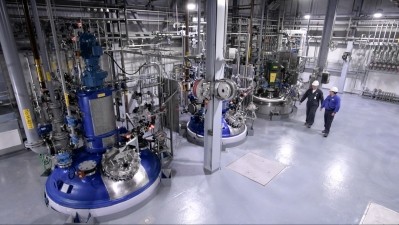Public or private: Where Catalent goes, will other CMOs follow?

Catalent, the world’s largest contract manufacturing organisations (CMO) by revenue, was formed in 2007 when the investment group Blackstone acquired the Pharmaceutical Technologies and Services segment of Cardinal Health.
The firm went public in July, raised $872m (€675m) in its IPO, and, in this reporter’s opinion, mimics last year move by the equivalent leader in the clinical field, Quintiles, suggesting this is “a harbinger of things to come” for the CMO industry.
Ripe for Consolidation
When it comes to private equity much of the trade press – this publication included – has focused on the clinical research sector as an increased trend to outsource R&D and low-risk high-returns have made contract research organisations (CROs) ideal investment targets.
However, private equity (PE) and venture capital is rife within the manufacturing sector too, but current market conditions - which played a part in Catalent’s IPO and mid-tier Recipharm going public earlier this year - are not favourable for PE firms which typically have investment windows of between three and seven years.
“The CDMO space is very fragmented and ripe for consolidation [and] to date, the strategic players have been more active than investors,” Christian Carlson - a partner in healthcare investment banking advisory firm 11T Partners - told Outsourcing-Pharma.com, echoing the words of Catalent’s CEO John Chiminski earlier this month.
“The problem with CDMOs is that they are asset heavy and more difficult to restructure/turn-around for exit,” Carlson continued, adding that “finding the right platform and targets for M&A remains a challenge as many of these companies are on the smaller side.”
Evolving CDMOs, but at what cost?
Despite this, Vladimir Walko - Managing Partner at corporate development firm Medical Growth Partners - believes CMOs, like CROs, will still be investable as they do not have the ‘binary risk’ factor associated with pharma companies or preclinical firms meaning PE can “place less risky bets” to get a return on their investment.
Furthermore, he told us some CMOs are “moving upstream and developing their own generics” which are either partnered off or see the firm set up a sister marketing/Private Label company. “PE like this model as it offers the stability of the service business while adding he upside of a low-risk drug partnership.”
He added interest in CMOs has been furthered by demand for biologics and injectables, while the API side of the business, “which all thought had been lost to India and China, is coming back to the US,” due to a shift towards high-end and highly potent ingredients, with firms including AMRI, Cambrex, and AAI taking advantage.
“Unfortunately,” he told us, “there is a shortage of reasonable size companies in this sector and they are selling at a premium.”
Next round of sales
There was a flurry of PE activity in CMOs from 2004 to 2007, Neal McCarthy - Managing Director at Fairmount Partners - told us, with LDC’s investment in Aesica, Bridgepoint and Aenova, NextPharma and Credit Suisse, and of course Blackstone’s involvement in Catalent.
A second period occurred from 2011: LDC sold Aesica to fellow PE firm Silverfleet, and NextPharma was acquired by Sun European. Aenova’s investors Bridgepoint followed suit a year later and sold the firm to BC Partners. Capsugel and Cytovance were also targeted by KKR and Great Point, respectively.
Blackstone taking Catalent public may signal the next round of PE firms cashing in on their contract manufacturing investments, though according to McCarthy going public is just one option.
“While some of those sales will go to other PE firms,” he explained, “some will go to industry buyers and some will go to the public market. In general, they will sell to the highest bidder, and for large deals, the public investor is a great alternative.
“That doesn’t mean PE buyers aren’t interested – just that the public market is a viable high priced alternative buyer.”








